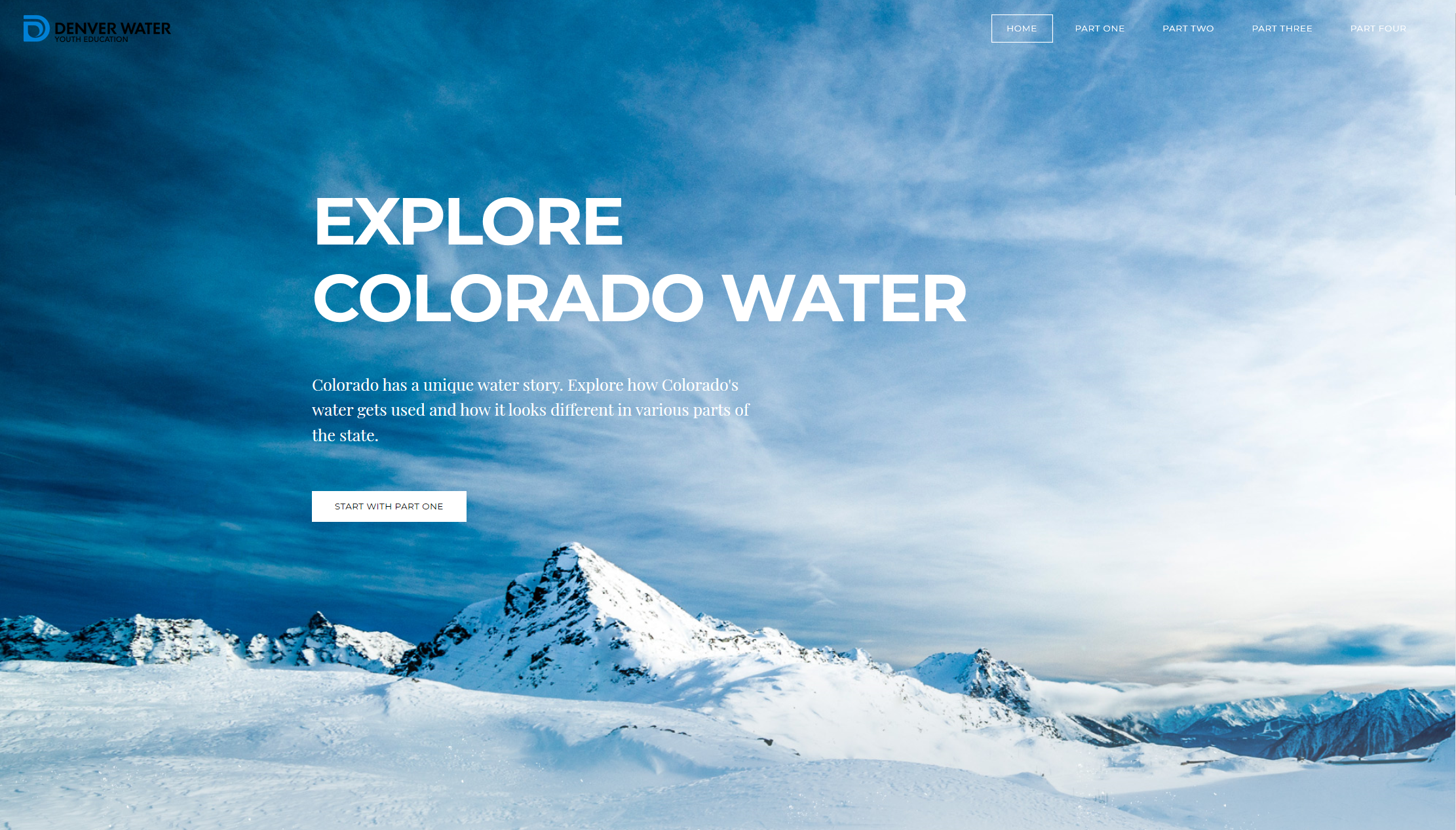
Learning about water while 'safer at home'
Schools may be temporarily closed, but students can still can learn about the importance of water in Colorado.
That’s because Denver Water’s Youth Education team recently created Explore Colorado Water. It’s an online learning platform that teachers can use to help students learn about water in a virtual environment.
The tool was developed to help teachers provide learn-from-home curriculum during the COVID-19 outbreak. And once schools reopen, the platform will provide a great compliment to the in-classroom work that Denver Water's Youth Education team does throughout the school year. In 2019, the program worked with more than 10,000 students and adults.
“The journey of water is a complicated story in Colorado,” said Matt Bond, manager of Youth Education at Denver Water. “An online platform, provides a tremendous opportunity for students to become explorers in a structured, yet self-directed journey.”
Explore Colorado Water is a four-part lesson designed to help students understand water collection and distribution in Colorado. Each section includes questions and exploratory activities to keep students engaged throughout the learning process.
- Part one presents an interactive water map that encourages students to explore Colorado water by selecting map layers to reveal elements like rivers, reservoirs, watersheds and the Continental Divide. By turning the map layers on and off, students learn where water is collected and how it is used throughout the state.
- Part two explains what a watershed is and why it's important in Colorado. (Did you know that Colorado is also known as the headwaters state because many rivers originate here while all the water flows out of the state?) The lesson shows students how to build a watershed using a sheet of paper.
- Part three lets students investigate the Continental Divide’s role in Colorado water.
- Part four helps students understand the urban watershed in which they live. Students can enter their home, school or other address to see where their individual watersheds are located. They can also see their place in larger river basins and create precipitation reports.
Explore Colorado Water is designed around the state’s education standards for fifth to eighth grade students. It can also be modified as needed through different grade levels, and flexibility was built-in to provide teachers a way to teach about water in a fashion that best satisfies their classroom needs.
This commitment to helping students make wise decisions about water was the inspiration behind a companion lesson called Be a Wise Water User. This two-part lesson helps students collect and examine data about their household’s water use, while helping them think critically about the decisions they make to decrease their water footprint.
“We treat young people with the significance they deserve,” Bond said. “And we are committed to preparing our young people to face the water challenges of the future.”


